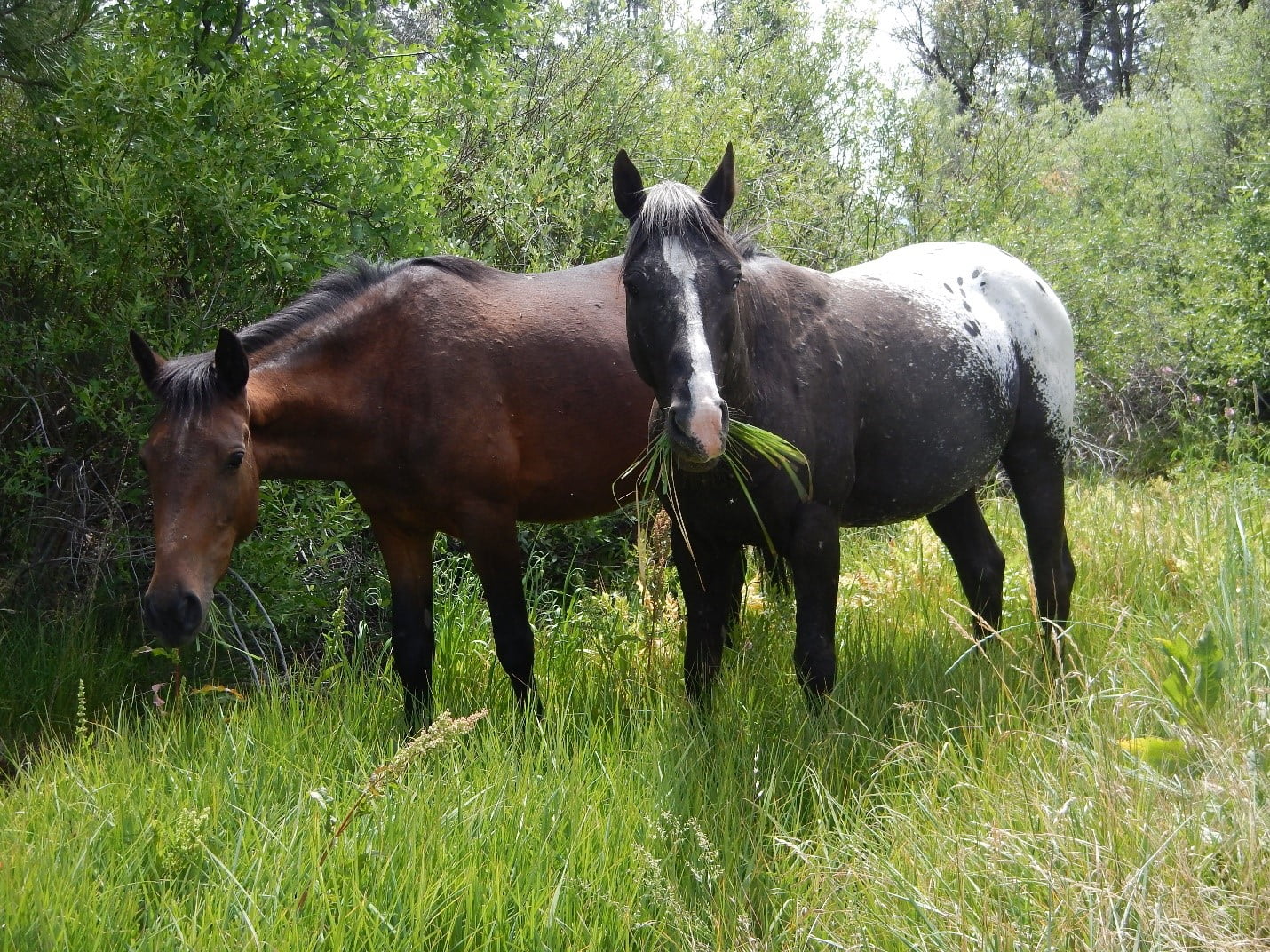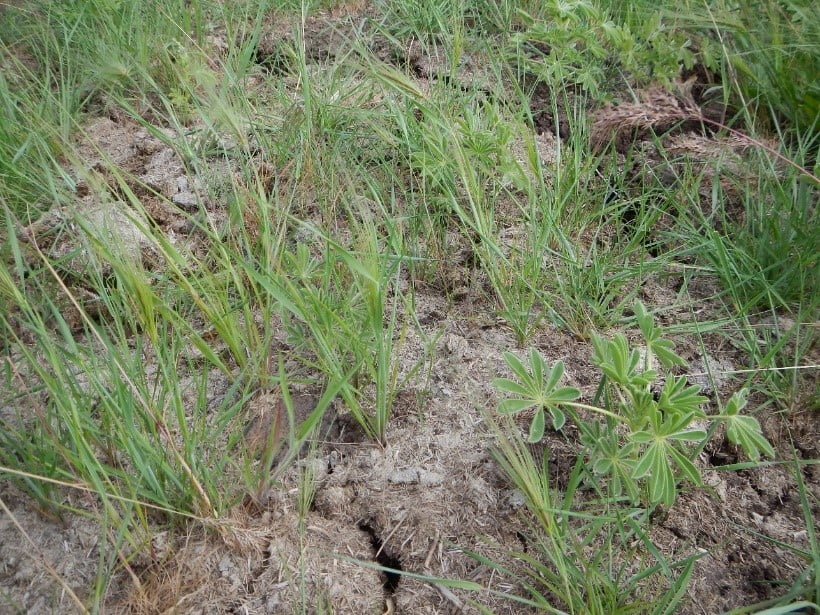Why replacing wild horses with cattle in wilderness areas is costly to taxpayers and to the landscape.
Q3 2020 hedge fund letters, conferences and more
The financial impacts of poorly managed public lands, especially wilderness, are very costly, far reaching and significantly affect taxpayer pocketbooks and lifestyles, with direct and tertiary impacts, as discussed herein.

Growing livestock management issues on public lands, especially in wilderness areas, is a major concern given that cattle and sheep are invasive animal species in North America that interrupt the naturally evolved trophic cascades, which results undeniable damage to entire ecosystems. The unraveling of nature’s intricate evolutionary complexities yields losses to the forestry industry, recreational interests, watersheds and related fisheries.
Both cattle and sheep have complex (multiple) stomachs and virtually digest all the seeds they consume from flowering plants and grasses, thus interrupting the natural reseeding of the flora in any given ecosystem where invasive species cattle and sheep graze.
Livestock Grazing Will Strip The Landscape Of Its Native Flora
Over time, cattle and sheep grazing will strip the landscape of any ecosystem of its native flora, which is depended upon by numerous other species.
In wilderness areas where there are threatened and endangered species of flora, and native fauna that depend upon the native flora for their existence, livestock grazing can wipe out the native flora, thus adversely affecting native fauna as well.
Science shows that native species wild horses, having single stomachs, virtually pass all of the seeds they consume intact and able to germinate in their droppings, which in fact reseeds the landscapes where they graze on native flora [1].

When the soils of the landscape are depleted of native flora via invasive species cattle and sheep grazing, soils lose the stability that was provided by root systems and are then subject to catastrophic erosion during seasonal rains.
Abnormal Erosion Process
This abnormal erosion process also occurs when catastrophic wildfire (abnormally hot wildfire) defoliates a landscape and pasteurizes soils, killing root systems that stabilized the soils. The recent evolution of catastrophic wildfire in western American states is also a result of less than adequate natural resource management, which has led to the collapse of large native species herbivores that had been consuming and maintaining fuel loads of grass and brush across the landscape to nominal levels annually. American wild horses, with past populations in the tens of millions in the 17th century and numbering 2-million in the early 19th century, were an important native species in North America in regard to maintaining grass and brush fuels to nominal levels, while maintaining an evolved natural reseeding process across the landscapes where they grazed.
The stripping of the flora from the landscape via invasive species grazing or by catastrophic wildfire in-turn leads to catastrophic runoff and abnormal erosion. This abnormal runoff and erosion results in the silting-in of the gravel beds of the streams and rivers used by spawning salmon and trout. The silting covers fish eggs that may already be present, which are suffocated by the mud. And gravel beds that become silted-in no longer provide space within the gravels (aka: ‘redds’) for any fish eggs. The consequences are failed trout and salmon runs, among other issues.
There are tens of millions of acres of rugged and remote American wilderness landscape, which are targeted for livestock grazing. These rugged and remote landscapes cannot be cultivated and managed using mechanized grass farming (re-seeding) methods, which are required to renew grasses on private tillable ranch land areas grazed by cattle and sheep. And therein is the problem. In the wilderness, which is mostly untillable due to steep and rough terrain, once the land is defoliated it cannot be reseeded by existing mechanized methods. The end result is landscapes stripped of native flora, that are erosion-prone lands. A further effect of this process is the depletion of aquifers in such areas as well as failing riparian areas.
Wild horses, evolved in North America 55-million years ago and as science shows, they have for millennia been nature’s reseeding experts in remote wilderness areas. Wild horses never went extinct in North America as some people and agencies incorrectly suggest. In fact, the most recent and best (unbiased) science proves that wild horses were present in North America prior to and after the arrival of any European explorers on the continent. The European explorers of the 16th century reintroduced additional horses to North America, horses that were descended from North American wild horses that had migrated across the Aleutian land bridge about 17,000 years ago. The latest cultural and archaeo-zoology presents a very strong case for these facts [2].
Public lands are arguably no longer managed sensibly, nor in the very highest standard of the public interest. And for that, American taxpayers pay the price. Instead, it’s becoming clear that our public lands are for sale to the highest bidder for exploitation by the livestock (cattle) and mineral extraction industries, with livestock production being as ecologically egregious as the extraction industries.
The Financial Impacts
The financial impacts related to livestock grazing on wilderness area lands is much greater than it may seem at first blush, and is largely based on the irreversible adverse impacts that livestock grazing has on wilderness areas.
The facts that support the foregoing summary statement are as follows:
The unreasonable reduction of native species American wild horses is supported heavily by the cattle and beef industries, and by people like Mr. Ethan Lane (National Cattlemen’s Beef Association Vice President of Government Affairs and representative for the Public Lands Council) who lobbies heavily for the livestock production industry to government agencies such as the Bureau of Land Management (BLM), U.S. Department of Interior (DOI) and U.S. Fish and Wildlife (USFW).
Wild horses are arguably being exterminated from America’s public lands to create more livestock grazing; and because the additional funding to the BLM for wild horse roundups are a source of incremental fees that are said likely derived from related administrative costs.
I intentionally use the term ‘exterminated’ because of the method that has been crafted to manage wild horses into extinction and remove any impediments to expanded livestock grazing programs on BLM managed public lands, especially wilderness lands.
In short, the plan that has been adopted by the Bureau of Land Management that will arguably exterminate native species American wild horses by motived people was carefully constructed to accomplish several key psychological milestones to limit public pushback.
The plan is accomplished in part by the use of intellectually dishonest scientific ‘experts’ and studies funded by biased parties (companies and agencies who serve the needs of the livestock industry) that misinform and confuse the American public (taxpayers) and their elected officials into believing these falsehoods:
- There are too many wild horses in America; and,
- They reproduce at an astounding rate; and,
- Wild horses are not a native species in America; and,
- Wild horse have no natural predators; and,
- Wild horses are damaging the landscape; and livestock benefit the landscape.
All of the foregoing statements can be proven false in the light of actual facts.
The Planned Wild Horse Extermination Process
The planned wild horse extermination process in America currently involves reducing population levels in herd areas below the numbers of breeding animals required to maintain genetic diversity and vigor of the species; and secondly, concurrently treating remaining female wild horses with chemicals (PZP and GonaCon) that cause sterility in mares as well as social disruption in family bands. The social disruption alone in any species of wildlife, including wild horses, is very detrimental, as science shows.
There is also a program on the table to spay wild horse mares using an archaic, cruel, and dangerous surgery — ovariectomy via colpotomy.
a. Arguably under the influence of the livestock industry, the BLM sets so-called (arbitrary; not based in science) ‘appropriate management levels’ (AMLs) for herds of wild horses and burros grazing public lands that Congress set aside for wild horses to numbers of animals well below what is required to maintain robust genetic diversity and genetic vigor.
The minimum (not optimal) number of wild horses in any immediate geographic herd area (Herd Area) must be 200 (or more) wild horses according to the best science. This statement is supported by extensive science in genetics and animal husbandry, including work by Dr. Cassandra Nunez, PhD, as cited herein below [3].
b. The BLM and United States Geological Survey (USGS) engage in highly questionable herd counts in establishing their so-called AMLs for herd areas and are based upon guess work since wild horses move rapidly across the landscape and are difficult to track. The BLM also greatly exaggerates rates of reproduction, in some cases citing herd reproduction rates that are biologically impossible [4].
In order to properly manage America’s natural resources, especially the remaining wilderness areas, we must take care in engaging the correct choice of large herbivores on such lands. And there is no doubt the wild horses are the correct herbivores for wilderness lands where threatened and endangered flora exist, and where catastrophic wildfires threaten both the flora and fauna of such precious lands [5]
References:
[1] https://grazelife.com/blog/wild-horse-fire-brigade-lessons-in-rebalancing-north-american-ecosystems-by-rewilding-equids/ [2] https://indiancountrytoday.com/news/yes-world-there-were-horses-in-native-culture-before-the-settlers-came-JGqPrqLmZk-3ka-IBqNWiQ? [3] https://www.horsetalk.co.nz/2018/02/24/wild-horses-managed-to-extinction/ [4] http://wildhorsefreedomfederation.org/blog/marybeth-devlin-hammers-the-blms-plans-to-rip-out-the-ovaries-of-wild-mares/ [5] https://www.valuewalk.com/wild-horses-reducing-catastrophic-wildfire/#WildHorses, #NaturalResourceManagement, #Wild_Horse, #Wildfire, #PublicLandsCouncil, #USGS, #DOI, #BLM












